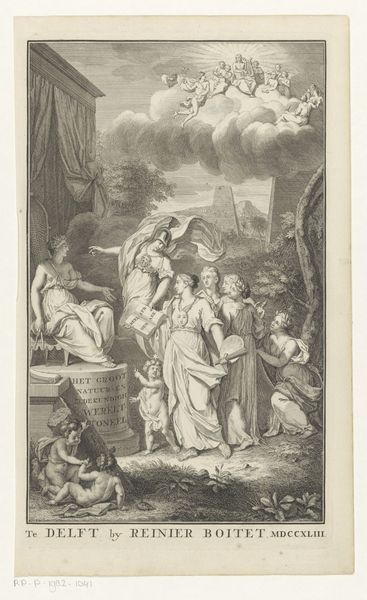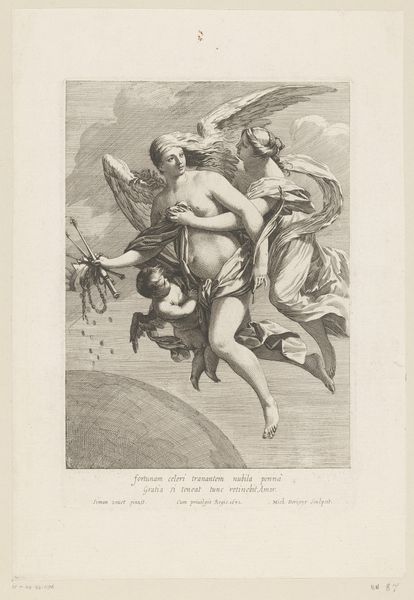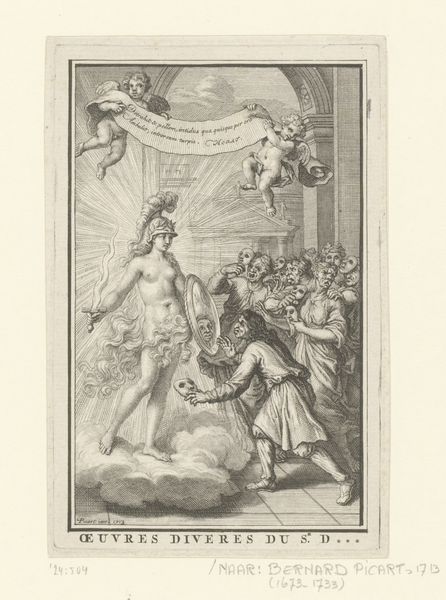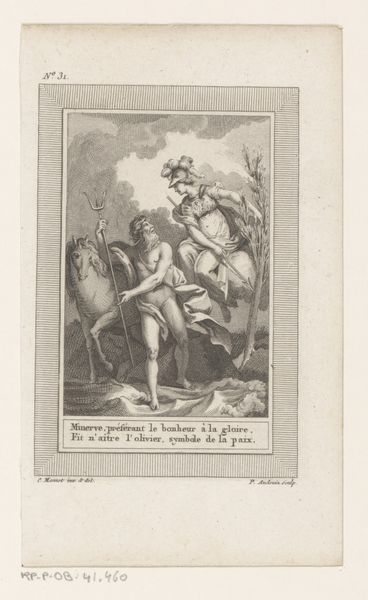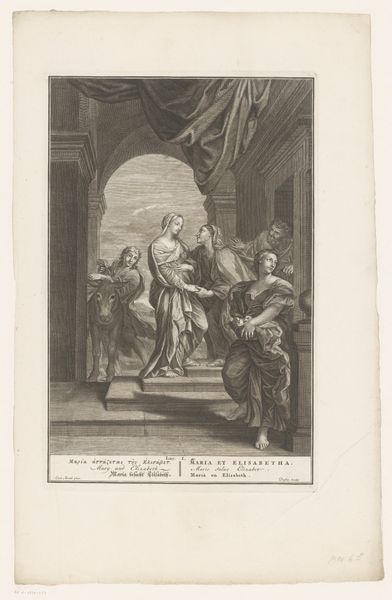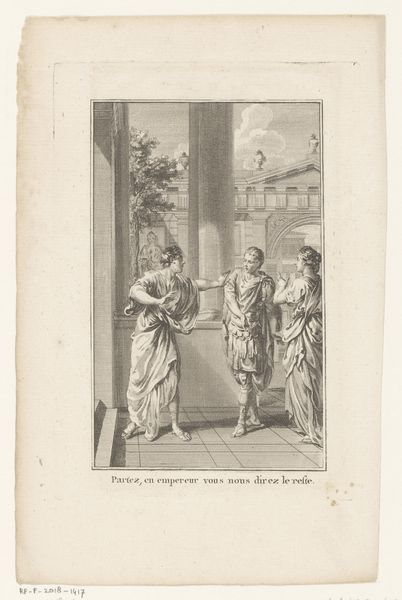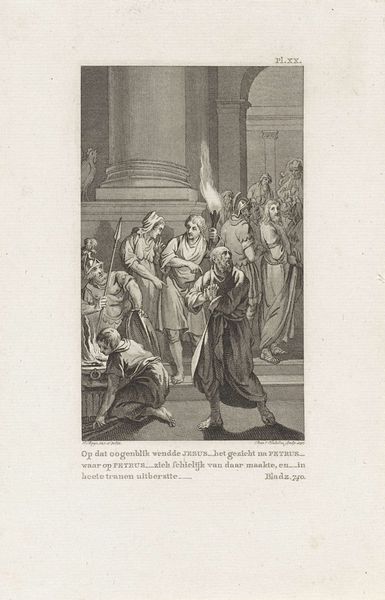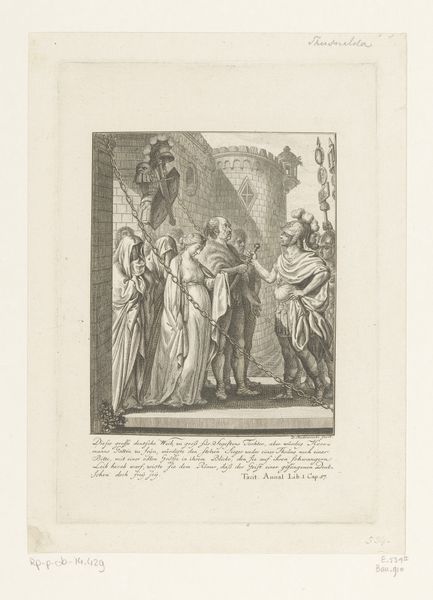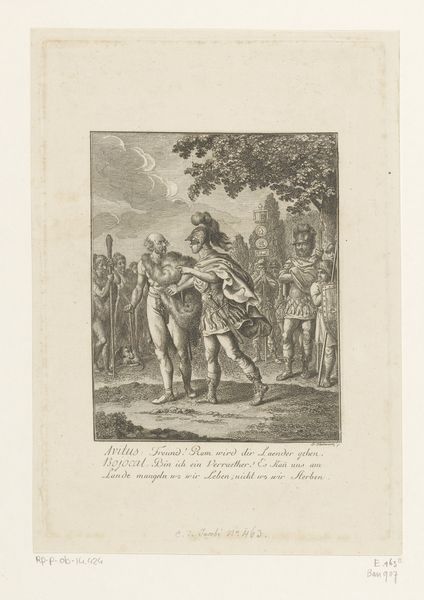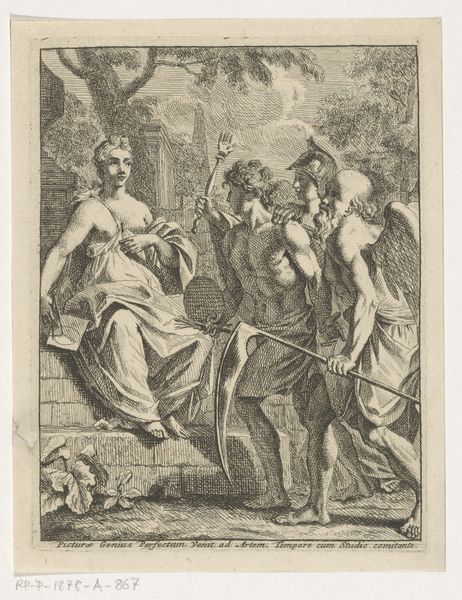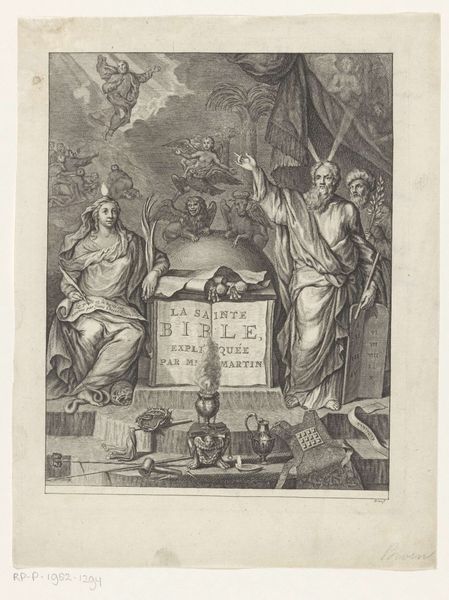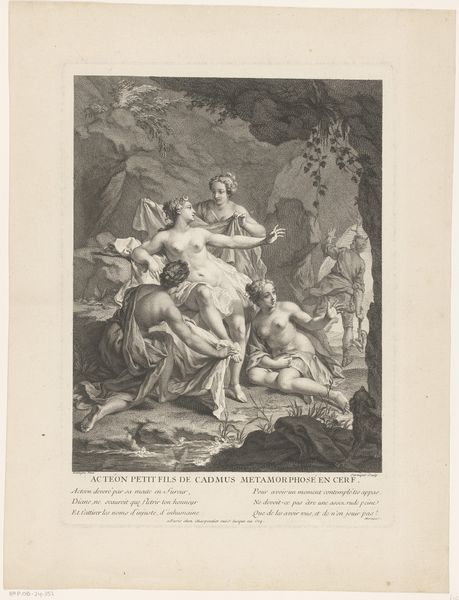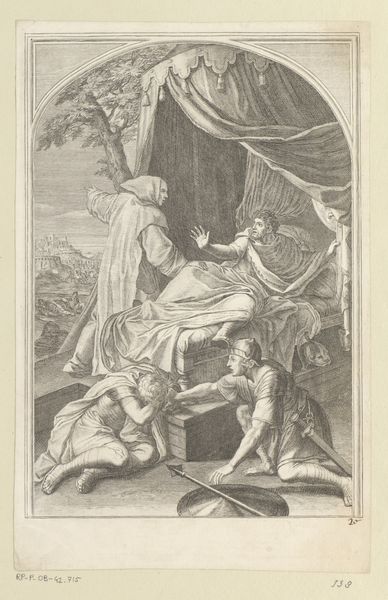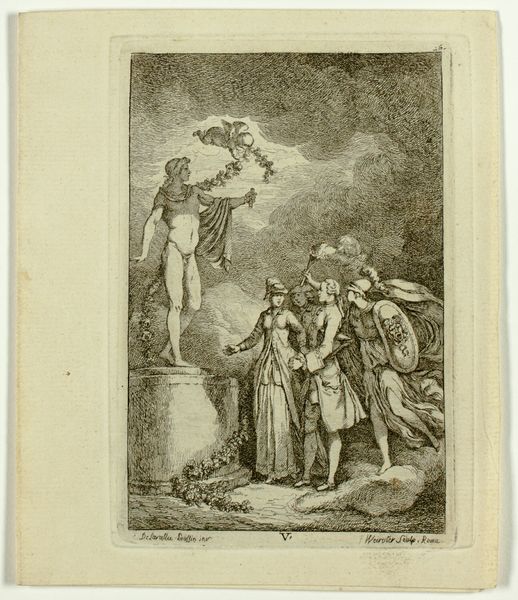
print, engraving
#
neoclacissism
# print
#
old engraving style
#
figuration
#
form
#
line
#
history-painting
#
nude
#
engraving
Dimensions: height 155 mm, width 91 mm
Copyright: Rijks Museum: Open Domain
This engraving, by Pierre Audouin, presents us with the Three Graces, figures rooted in classical antiquity. These goddesses—often associated with charm, beauty, and creativity—embody a cluster of delightful human qualities. The motif of the Graces has a long lineage, appearing in various guises throughout history. We can trace their presence from ancient Greek sculptures to Renaissance paintings. In Botticelli's "Primavera," for example, the Graces dance in a circle, symbolizing the blossoming of spring and the renewal of life. Here, in Audouin's interpretation, the Graces are partially veiled, holding a thin cloth above their heads. This motif appears in other contexts, such as images of nymphs and other minor deities. The modest veil speaks to the cultural values of the Neoclassical period in which Audouin was working, emphasizing beauty, virtue, and moral rectitude. The enduring presence of these symbols reveals a deep-seated human desire for beauty and harmony. These images connect with our collective memory, engaging viewers on a subconscious level and evoking the powerful emotions and associations linked to love, joy, and artistic inspiration. This cyclical progression demonstrates how symbols resurface, evolve, and take on new meanings across different eras.
Comments
No comments
Be the first to comment and join the conversation on the ultimate creative platform.
